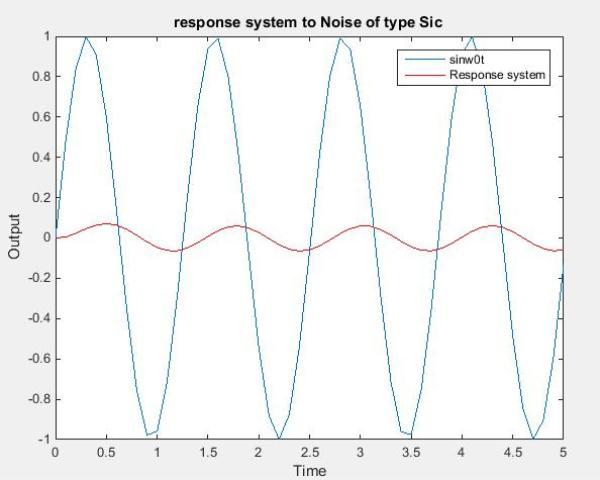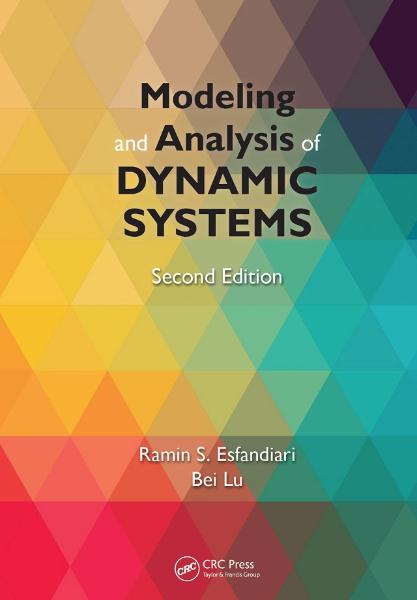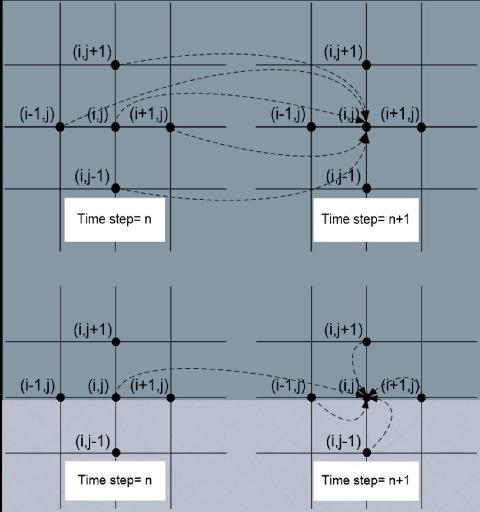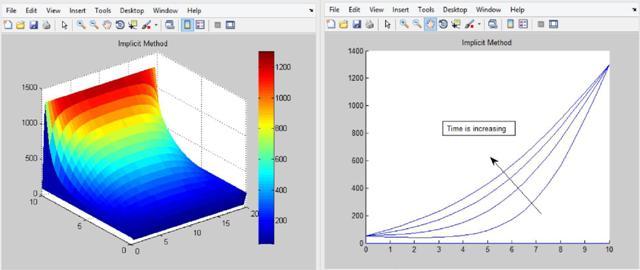
برتر فایل
مجموعه فایل های آموزش مقدماتی تا پیشرفته نرم افزار کتیا (CATIA) و مجموعه کتب, جزوات, پروژه و مقالات تخصصی مهندسی مکانیک
برتر فایل
مجموعه فایل های آموزش مقدماتی تا پیشرفته نرم افزار کتیا (CATIA) و مجموعه کتب, جزوات, پروژه و مقالات تخصصی مهندسی مکانیکپروژه با عنوان: طراحی کنترل مدرن و کنترل بهینه برای مدل تابع تبدیل در حالت های زمان پیوسته و زمان گسسته و مقایسه آنها
در این پروژه برای مدل تابع تبدیل کنترل کلاسیک، کنترل مدرن و کنترل بهینه در دو حالت زمان پیوسته و زمان گسسته طراحی شده است. ابتدا کنترل PID پیوسته طراحی شده و سپس PID دیجیتال و سپس رفتار سیستم نسبت به دو حالت مقایسه شده و در مرحله بعد کنترل فیدبک حالت و مشاهده گر و کنترل فیدبک با مشاهده گر طراحی شده و همچنین حالت های سیستم را با مشاهده گر مقایسه شده اند و تاثیر نویز و تغییر پارامتر ها روی رفتار سیستم بررسی شده است. سپس کنترل فیدبک حالت زمان گسسته، مشاهده گر آن و کنترل فیدبک حالت زمان گسسته همراه با مشاهده گر طراحی شده اند و حالت های سیستم را با مشاهده گر مقایسه شده اند. اثر نویز و تغییر پارامترها را روی این طراحی ها بررسی شده است و در آخر کنترل فیدبک حالت بهینه با تابع هزینه دلخواه طراحی شده است و رفتار سیستم با این طراحی را در حضور نویز بررسی شده است. نتیجه ای که گرفته ایم این است که کنترل PID در حذف نویز از سایر طراحی ها موفق تر بوده و کنترل فیدبک حالت نسبت به تغییر پارامترهای سیستم مقاوم تر بوده و از نظر سرعت رسیدن به حالت مانا، SVFC سریع ترین پاسخ را داشته است.
طراحی و ساخت دستگاه اندازه گیر دور موتور تاکومتر
تکنولوژی ساخت و تولید لوح فشرده
انواع موتورهای الکتریکی و مفصل ها
مدلسازی کنترلر ماشین تراش CNC

پروژه طراحی کنترلر کلاسیک، کنترل مدرن و کنترل بهینه برای مدل تابع تبدیل در حالت های زمان پیوسته و زمان گسسته و مقایسه آنها در محیط کد نویسی در MATLAB، مشتمل بر 57 صفحه، تایپ شده، به همراه روابط ریاضی و تصاویر با فرمت pdf جهت دانلود قرار داده شده و به ترتیب زیر گردآوری شده است:
- طراحی کنترل کننده PID زمان پیوسته
- ﻧﻮﺷﺘﻦ ﻣﻌﺎدﻻت ﺣﺎﻟﺖ ﺳﯿﺴﺘﻢ
- ﻃﺮاﺣﯽ ﮐﻨﺘﺮﻟﺮ PID ﺑﺎ اﺳﺘﻔﺎده از روش astrom
- نمودار های حوزه فرکانس کنترلر طراحی شده
- ترسیم ورودی کنترلی به Plant
- بررسی رفتار سیستم در حضور نویز و تغییر پارامترهای سیستم
- نویز ثابت
- نویز سینوسی
- تغییر پارامتر
- طراحی کنترلر دیجیتال PID
- طراحی کنترل کننده PID با استفاده از روش astrom
- نمودارهای حوزه فرکانس کنترل کننده طراحی شده
- ورودی کنترلی به plant
- بررسی رفتار سیستم در حضور نویز و تغییر پارامترها ی سیستم
- نویز ثابت
- نویز سینوسی
- تغییر پارامتر
- مقایسه عملکرد PID دیجیتال و PID زمان پیوسته
- کنترل فیدبک حالت و مشاهده گر
- طراحی SVFC
- طراحی مشاهده گر
- ترسیم حالت های سیستم و تخمین آنها
- طراحی SVFC با مشاهده گر مرتبه کامل
- بررسی رفتار سیستم با حضور نویز و تغییر پارامترهای سیستم
- نویز ثابت
- نویز سینوسی
- تغییر پارامتر های سیستم
- مقایسه ورودی کنترلی SVFC با ورودی کنترلیSVFC ومشاهده گر
- مقایسه SVFC با PID
- طراحی FTSC ، FTSC FTSO
- تبدیل سیستم به سیستم دیجیتال و استخراج معادلات حالت آن
- طراحی FTSC
- طراحی FTSO و ترسیم حالت های سیستم و تخمین انها و خطای آنها
- طراحی مشاهده گر دیجیتال و ترسیم حالت ها و تخمین ها
- ترسیم حالت های سیستم و تخمین آنها زمان پیوسته و زمان گسسته در یک نمودار
- طراحی FTSFTSO
- بررسی رفتار سیستم در حضور نویز
- نویز ثابت
- نویز سینوسی
- نویز سفید
- بررسی رفتار سیستم با تغییر پارامترهای سیستم
- بررسی ورودی کنترلی FTSC با ورودی کنترلی FTSCFTSO
- مقایسه FTSC با کنترلر PID دیجیتال طراحی شده در بخش دوم
- کنترل بهینه
- طراحی SVFC بهینه
- رفتار سیستم در حضور نویز
- مقایسه پاسخ پله سیستم با طراحی های LQR ،SVFC ،FTSC ،PID
- نتیجه گیری

پروژه با عنوان: طراحی کنترل مدرن و کنترل بهینه برای مدل تابع تبدیل در حالت های زمان پیوسته و زمان گسسته و مقایسه آنها
جهت دسترسی به آموزش های بیشتر بر لینک های زیر کلیک نمایید:
مدلسازی و شبیه سازی توربین بادی مجهز به DFIG و STATCOM
تولید برق از سلول های خورشیدی
طراحی سیستم هشدار دهنده گازهای خطرناک بوسیله پیامک
فاصله سنج اولتراسونیک با قابلیت اندازه گیری دما
طراحی فرکانس متر دیجیتال
کنترل روبات دو محوره با کنترل کننده ی فازی
سنسورها و اهمیت کاربرد آن
نحوه کار و کاربرد ماشین های مخصوص
بررسی و مطالعه طراحی باتری شارژرهای صنعتی
کنترل ماشین های AC و DC
کتاب مدلسازی و تحلیل سیستم های دینامیکی
کتاب مدلسازی و تحلیل سیستم های دینامیکی (Modeling and Analysis of Dynamic Systems)، مشتمل بر 10 فصل، 558 صفحه، به زبان انگلیسی، همراه با تصاویر، فرمول ها و جداول مهم، با فرمت pdf، به ترتیب زیر گردآوری شده است:
Chapter 1: Introduction to MATLAB, Simulink, and Simscape
- MATLAB Command Window and Command Prompt
- User Defined Functions and Script Files
- Creating a Script File
- Defining and Evaluating Functions
- Iterative Calculations
- Matrices and Vectors
- Differentiation and Integration
- Plotting in MATLAB
- Plotting Data Points
- Plotting Analytical Expressions
- Simulink
- Block Library
- Building a New Model
- Simulation
- Simscape
- Block Library
- Building a New Model and Simulation
- Simulation
Chapter 2: Complex Analysis, Differential Equations, and Laplace Transformation
- Complex Analysis
- Complex Numbers in Rectangular Form
- Magnitude
- Complex Conjugate
- Complex Numbers in Polar Form
- Complex Algebra Using the Polar Form
- Integer Powers of Complex Numbers
- Roots of Complex Numbers
- Complex Variables and Functions
- Differential Equations
- Linear, First-Order Differential Equations
- Second-Order Differential Equations with Constant Coefficients
- Homogeneous Solution
- Particular Solution
- Laplace Transformation
- Linearity of Laplace and Inverse Laplace Transforms
- Differentiation and Integration of Laplace Transforms
- Differentiation of Laplace Transforms
- Integration of Laplace Transforms
- Special Functions
- Unit-Step Function
- Unit-Ramp Function
- Unit-Pulse Function
- Unit-Impulse (Dirac Delta) Function
- The Relation between Unit-Impulse and Unit-Step
- Functions
- Periodic Functions
- Laplace Transforms of Derivatives and Integrals
- Laplace Transforms of Derivatives
- Laplace Transforms of Integrals
- Inverse Laplace Transformation
- Partial-Fraction Expansion Method
- Performing Partial Fractions in MATLAB
- Convolution Method
- Final-Value Theorem and Initial-Value Theorem
- Final-Value Theorem
- Initial-Value Theorem
- Summary
Chapter 3: Matrix Analysis
- Vectors and Matrices
- Special Matrices
- Elementary Row Operations
- Rank of a Matrix
- Determinant of a Matrix
- Properties of Determinant
- Rank in Terms of Determinant
- Block Diagonal and Block Triangular Matrices
- Inverse of a Matrix
- Adjoint Matrix
- Solution of Linear Systems of Equations
- Gauss Elimination Method
- Using the Inverse of the Coefficient Matrix
- Cramer’s Rule
- Homogeneous Systems
- Matrix Eigenvalue Problem
- Solving the Eigenvalue Problem
- Algebraic Multiplicity and Geometric Multiplicity
- Generalized Eigenvectors
- Similarity Transformations
- Matrix Diagonalization
- Defective Matrices
- Summary
Chapter 4: System Model Representation
- Configuration Form
- Second-Order Matrix Form
- State-Space Form
- State Variables, State-Variable Equations, State Equation
- State-Variable Equations
- State Equation
- Output Equation, State-Space Form
- Output Equation
- State-Space Form
- Decoupling the State Equation
- Input–Output Equation, Transfer Function
- Input–Output Equations from the System Model
- Transfer Functions from the System Model
- Relations between State-Space Form, Input–Output Equation and Transfer Matrix
- Input–Output Equation to State-Space Form
- Controller Canonical Form
- State-Space Form to Transfer Matrix
- Block Diagram Representation
- Block Diagram Operations
- Summing Junction
- Series Combinations of Blocks
- Parallel Combinations of Blocks
- Integration
- Closed-Loop Systems
- Block Diagram Reduction Techniques
- Moving a Branch Point
- Moving a Summing Junction
- Mason’s Rule
- Block Diagram Construction from System Model
- Linearization
- Linearization of a Nonlinear Element
- Functions of Two Variables
- Linearization of a Nonlinear Model
- Operating Point
- Linearization Procedure
- Small-Angle Linearization
- Linearization with MATLAB Simulink
- Summary
Chapter 5: Mechanical Systems
- Mechanical Elements
- Mass Elements
- Spring Elements
- Damper Elements
- Equivalence
- Translational Systems
- Degrees of Freedom
- Newton’s Second Law
- Free-Body Diagrams
- Static Equilibrium Position and Coordinate Reference
- Massless Junctions
- D’Alembert’s Principle
- Rotational Systems
- General Moment Equation
- Modeling of Rigid Bodies in Plane Motion
- Mass Moment of Inertia
- Pure Rolling Motion
- Mixed Systems: Translational and Rotational
- Force and Moment Equations
- Energy Method
- Gear–Train Systems
- System Modeling with Simulink and Simscape
- Translational Systems
- Rotational Systems
- Summary
Chapter 6: Electrical, Electronic, and Electromechanical Systems
- Electrical Elements
- Resistors
- Inductors
- Capacitors
- Electric Circuits
- Kirchhoff’s Voltage Law
- Kirchhoff’s Current Law
- Node Method
- Loop Method
- State Variables of Circuits
- Operational Amplifiers
- Electromechanical Systems
- Elemental Relations of Electromechanical Systems
- Armature-Controlled Motors
- Field-Controlled Motors
- Impedance Methods
- Impedances of Electric Elements
- Series and Parallel Impedances
- Mechanical Impedances
- System Modeling with Simulink and Simscape
- Electric Circuits
- Operational Amplifiers
- DC Motors
- Summary
Chapter 7: Fluid and Thermal Systems
- Pneumatic Systems
- Ideal Gases
- Pneumatic Capacitance
- Modeling of Pneumatic Systems
- Liquid-Level Systems
- Hydraulic Capacitance
- Hydraulic Resistance
- Modeling of Liquid-Level Systems
- Thermal Systems
- First Law of Thermodynamics
- Thermal Capacitance
- Thermal Resistance
- Modeling of Heat Transfer Systems
- System Modeling with Simulink and Simscape
- Summary
Chapter 8: System Response
- Types of Response
- Transient Response and Steady-State Response
- Transient Response of First-Order Systems
- Free Response of First-Order Systems
- Impulse Response of First-Order Systems
- Step Response of First-Order Systems
- Ramp Response of First-Order Systems
- Transient Response of Second-Order Systems
- Free Response of Second-Order Systems
- Initial Response in MATLAB
- Impulse Response of Second-Order Systems
- Impulse Response in MATLAB
- Step Response of Second-Order Systems
- Step Response in MATLAB
- Response Analysis Using MATLAB Simulink
- Frequency Response
- Frequency Response of Stable, Linear Systems
- Frequency Response of First-Order Systems
- Frequency Response of Second-Order Systems
- Bode Diagram
- Plotting Bode Diagrams in MATLAB
- Bode Diagram of First-Order Systems
- Bode Diagram of Second-Order Systems
- Solving the State Equation
- Formal Solution of the State Equation
- Matrix Exponential
- Formal Solution in MATLAB
- Solution of the State Equation via Laplace Transformation
- Solution of the State Equation via State-Transition Matrix
- Response of Nonlinear Systems
- Numerical Solution of the State-Variable Equations
- Fourth-Order Runge–Kutta Method
- Response via MATLAB Simulink
- Response of the Linearized Model
- Summary
Chapter 9: Introduction to Vibrations
- Free Vibration
- Logarithmic Decrement
- Coulomb Damping
- Forced Vibration
- Half-Power Bandwidth
- Rotating Unbalance
- Harmonic Base Excitation
- Vibration Suppressions
- Vibration Isolators
- Vibration Absorbers
- Modal Analysis
- Eigenvalue Problem
- Orthogonality of Modes
- Response to Initial Excitations
- Response to Harmonic Excitations
- Vibration Measurement and Analysis
- Vibration Measurement
- System Identification
- Summary
Chapter 10: Introduction to Feedback Control Systems
- Basic Concepts and Terminologies
- Stability and Performance
- Stability of Linear Time-Invariant Systems
- Time-Domain Performance Specifications
- Frequency-Domain Performance Specifications
- Benefits of Feedback Control
- Stabilization
- Disturbance Rejection
- Reference Tracking
- Sensitivity to Parameter Variations
- Proportional–Integral–Derivative Control
- Proportional Control
- Proportional–Integral Control
- PID Control
- Ziegler–Nichols Tuning of PID Controllers
- Root Locus
- Root Locus of a Basic Feedback System
- Analysis Using Root Locus
- Control Design Using Root Locus
- Bode Plot
- Bode Plot of a Basic Feedback System
- Analysis Using Bode Plot
- Control Design Using Bode Plot
- Full-State Feedback
- Analysis of State-Space Equations
- Control Design for Full-State Feedback
- Integration of Simulink and Simscape into Control Design
- Control System Simulation Using Simulink
- Integration of Simscape into Control System Simulation
مبانی دینامیک خودرو
ارتعاشات مکانیکی، تئوری و کاربردها
تعمیرات بر اساس شرایط کار ماشین (آنالیز ارتعاشات، آنالیز صوت و آنالیز روغن)

کتاب مدلسازی و تحلیل سیستم های دینامیکی
جهت دسترسی به آموزش های بیشتر بر لینک های زیر کلیک نمایید:
شبیه سازی ارتعاشات با استفاده از نرم افزارهای متلب و انسیس
مجموعه جزوات کارشناسی ارشد مهندسی مکانیک
پرسش و پاسخ ارتعاشات مکانیکی تامسون
دینامیک سیالات محاسباتی برای توربینهای بادی و جزر و مدی ساحلی
آموزش شبیه سازی و آنالیز دینامیک سیالات محاسباتی XFlow
مجموعه مثال های آموزشی نرم افزار ANSYS CFX
دینامیک سیالات محاسباتی
حل معادله انتقال حرارت دو بعدی به روش صریح و ضمنی در نرم افزار متلب
آموزش متلب، جزوه آموزش حل معادله انتقال حرارت دو بعدی به روش صریح و ضمنی در نرم افزار MATLAB
معادلات دیفرانسیل جزئی (P.D.E) یکی از موارد پر کاربرد در محیط های مختلف پیوسته می باشند که نظیر آنها را در معادلات موج یا انتقال حرارت می توان مشاهده نمود. در این جزوه آموزشی هدف آموزش برنامه نویسی روش explicit و implicit در حل انتقال حرارت دو بعدی در یک صفحه مستطیلی به روش تفاضل محدود (Finite Difference) است...

جزوه آموزش حل معادله انتقال حرارت دو بعدی به روش صریح و ضمنی در نرم افزار MATLAB،
یک جزوه آموزشی مفید و کاربردی از آموزش مبحث انتقال حرارت در نرم افزار
پیشرفته متلب است. همچنین به همراه جزوه بالا تمام m فایل های استفاده شده
در این جزوه آموزشی، در فایل rar دانلود شده موجود می باشد. با توجه به
اینکه این برنامه دارای تابع می باشد، حتماً بایستی Current Folder نرم
افزار بر روی فولدر این مجموعه
تنظیم شود. این جزوه مشتمل بر 22 صفحه، به زبان فارسی، تایپ شده، به همراه
تصاویر رنگی، با فرمت PDF، به ترتیب زیر گردآوری شده است:
بخش 1: مقدمه
بخش 2: روش های حل معادلات دیفرانسیل جزئی از نوع سهمیگون
- روش صریح
- روش ضمنی
بخش 3: صورت مسئله
بخش 4: برنامه MATLAB
- برنامه روش صریح
- برنامه روش ضمنی
بخش 5: خروجی ها
بخش 6: متن برنامه
- ضمیمه الف
- ضمیمه ب

جهت دانلود جزوه آموزش حل معادله انتقال حرارت دو بعدی به روش صریح و ضمنی در نرم افزار MATLAB بر لینک زیر کلیک نمایید:
آموزش متلب، جزوه آموزش حل معادله انتقال حرارت دو بعدی به روش صریح و ضمنی در نرم افزار MATLAB
کتاب مقدمه ای بر تحلیل اجزاء محدود با استفاده از نرم افزارهای MATLAB & ABAQUS
کتاب مقدمه ای بر تحلیل اجزاء محدود با استفاده از نرم افزارهای MATLAB & ABAQUS، یکی از کتاب های مفید و کاربردی در زمینه تحلیل اجزاء محدود با استفاده از دو نرم افزار معروف متلب و آباکوس می باشد. این کتاب مشتمل بر 11 فصل، 487 صفحه، به زبان انگلیسی روان، تایپ شده، به همراه تصاویر، روابط مهم ریاضی و فرمول های مهم اجزاء محدود، با فرمت PDF، به ترتیب زیر گردآوری شده است:
Chapter 1: Introduction
- Prologue
- Finite Element Analysis and the User
- Aim of the Book
- Book Organization
Chapter 2: Bar Element
- Introduction
- One-Dimensional Truss Element
- Global Stiffness Matrix Assembly
- Boundary Conditions
- Solution of the System of Equations
- Support Reactions
- Members’ Forces
- Computer Code: truss.m
- Problems
- Analysis of a Simple Truss with Abaqus
Chapter 3: Beam Element
- Introduction
- Stiffness Matrix
- Uniformly Distributed Loading
- Internal Hinge
- Computer Code: beam.m
- Problems
- Analysis of a Simple Beam with Abaqus
Chapter 4: Rigid Jointed Frames
- Introduction
- Stiffness Matrix of a Beam–Column Element
- Stiffness Matrix of a Beam–Column Element in the Presence of Hinged End
- Global and Local Coordinate Systems
- Global Stiffness Matrix Assembly and Solution for Unknown Displacements
- Computer Code: frame.m
- Analysis of a Simple Frame with Abaqus
Chapter 5: Stress and Strain Analysis
- Introduction
- Stress Tensor
- Deformation and Strain
- Stress–Strain Constitutive Relations
- Solved Problems
Chapter 6: Weighted Residual Methods
- Introduction
- General Formulation
- Galerkin Method
- Weak Form
- Integrating by Part over Two and Three Dimensions (Green Theorem)
- Rayleigh Ritz Method
Chapter 7: Finite Element Approximation
- Introduction
- General and Nodal Approximations
- Finite Element Approximation
- Basic Principles for the Construction of Trial Functions
- Two-Dimensional Finite Element Approximation
- Shape Functions of Some Classical Elements for C0 Problems
Chapter 8: Numerical Integration
- Introduction
- Gauss Quadrature
- Integration over a Reference Element
- Integration over a Triangular Element
- Solved Problems
Chapter 9: Plane Problems
- Introduction
- Finite Element Formulation for Plane Problems
- Spatial Discretization
- Constant Strain Triangle
- Linear Strain Triangle
- The Bilinear Quadrilateral
- The 8-Node Quadrilateral
- Solved Problem with MATLAB
Chapter 10: Axisymmetric Problems
- Definition
- Strain–Displacement Relationship
- Stress–Strain Relations
- Finite Element Formulation
- Programming
- Analysis with Abaqus Using the 8-Node Quadrilateral
Chapter 11: Thin and Thick Plates
- Introduction
- Thin Plates
- Thick Plate Theory or Mindlin Plate Theory
- Linear Elastic Finite Element Analysis of Plates
- Boundary Conditions
- Computer Program for Thick Plates Using the 8-Node Quadrilateral
- Analysis with Abaqus

کتاب مقدمه ای بر تحلیل اجزاء محدود با استفاده از نرم افزارهای MATLAB & ABAQUS
کتاب راهنمای پیشرفته MATLAB، مثال های عملی در علوم و مهندسی
کتاب راهنمای پیشرفته MATLAB، مثال های عملی در علوم و مهندسی (Advanced Guide to MATLAB, Practical Examples in Sience and Engineering)، مشتمل بر 11 فصل، 375 صفحه، با فرمت pdf، همراه با تصاویر، به زبان انگلیسی، به ترتیب زیر گردآوری شده است:Chapter 1: History of Computers, Computer Languages and MATLAB
- The Beginning of Computing
- Random Access Memory (RAM)
- The Microprocessor
- Motherboard
- Server
- Algorithm
- Kernel
- Programming Languages
- High-Level Language and Assembly Language
- Simple Terms Related to Computers
- Steps to Execute a Program
- History of MATLAB
- The Script Files
- Help
- Storage Duration of a Variable
- Fun with MATLAB and Built-in Demos
- Few Useful Commands Features
Chapter 2: The Compiler
- What is a Compiler
- How Does a Compiler Work
- Interpreter and Compiler
- The MATLAB Compiler
Chapter 3: Numbers, Review of Matrices and Matrix Operations
- Arrays and Matrices
- Array Operations in MATLAB
- Integer Representation in Various Formats
- Defining a Variable in MATLAB
- Real Number
- Absolute Value
- ASCII, EBCDIC
- Infinity (∞)
- Imaginary Number
- Mantissa
- eps
- Hadamard Matrix
- Upper and Lower Triangular Matrix
- pi
- meshgrid
- Convert Decimal to Binary and Binary to Decimal, dec2bin, de2bi and bin2dec
- Ones’ Compliment
- Logical Operators &, |, ~ and xor
- Relational Operators
- The ‘:’ Operator
- Use of Temporary Variable for Sorting an Array
- Product of Two Matrices
- Determinant, Finding Determinant of a Square Matrix
- Transpose of a Matrix
- Eigenvalue and Eigenvector
- Palindromic Number, Reversing a Number, Palindrome
- Identity Matrix
- Sparse Matrix
- Rotation Matrix
- Translation Matrix
- trace
- fliplr
Chapter 4: Plotting Using MATLAB
- Plotting a Line
- Colors in MATLAB
- ginput
- plot and plot3
- figure
- Scatter Plot
- colordef
- Mesh Plot
- surf and surfc Plots
- The Barnsley’s Fern Problem
- A Cone
- A Paraboloid
- Contour Plots
- A Plane
- Cube
Chapter 5: Image Processing Using MATLAB
- Digital Image
- image (c)
- Create a Shadow to a Plot
- Children
- Shading
- FaceAlpha
- Giving Color and Transparency to Edges of a Figure
- Types of Axis
- Lighting and Material
- View
- Creating Plots Using Markers Filled with Colors and Having Varying Sizes
- Rotation of an Image
- pcolor
- Reading an Image From an URL
- Changing the Background Color Using Figure(‘color’,c)
- Convert a 8-bit RGB Image to a Grayscale Image
- camup
- rotate
- Colormaps
- RGB Image
- camlight
- Insert Ellipse, Annotation or Double Arrow in a Figure
- Saving an Image with a New Filename
- Obtaining Information About an Image File
- Variation of Colors with the Variation in the Values in the Array
- Add Line and Text to an Image
- Buckyball
Chapter 6: Animation, Sound and Movies Using MATLAB
- Animation
- drawnow
- handle
- Making Movies with MATLAB
- getframe
- Sound
- Audio Data
Chapter 7: Numerical Methods Using MATLAB
- Numerical Integration
- System of Linear Equations
- System of Non-Linear Equations
- Solving System of Equations Using MATLAB Function fsolve
- Interpolation
- Straight Line Fit Using Least Square Method
- Curve Fitting Using Built-In Functions polyval and polyfit
- Cubic Fit Using Least Square Method
- Finding Roots of a Polynomial
- Solution to Ordinary Differential Equations (ODEs)
Chapter 8: Unconstrained Single Variable Optimization Methods
- Bracketing Methods
- Region Elimination Methods
- Gradient-based Methods
Chapter 9: Statistical Functions
- Statistics
- Mean, Median, Mode and Range
- Standard Deviation, Variance
- erf (x), Error Function
- erfc(x), Complimentary Error Function
- Normal Distribution
- Normalization
- Representation of Union, Intersection, Exclusive or and Subtraction
- Pie Chart
- Bar Chart
- Histogram
- boxplot
- Random Numbers
Chapter 10: Solved Problems
Chapter 11: Dictionary of Additional Terms

کتاب راهنمای پیشرفته MATLAB، مثال های عملی در علوم و مهندسی